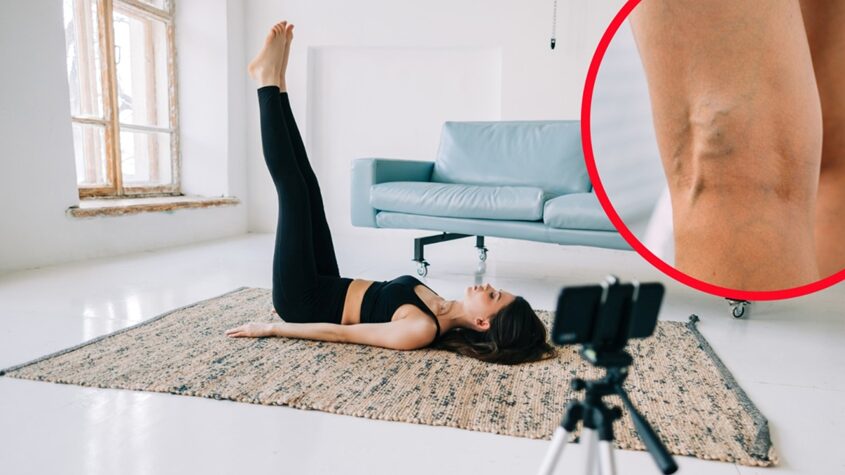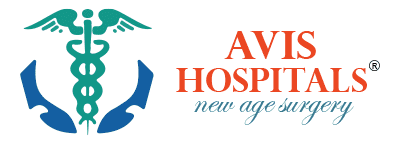- Avis Hospitals
- No Comments
Varicose veins are a common vascular condition characterized by twisted, swollen veins that typically develop in the lower limbs. Several factors contribute to its development, preventive measures play an important role in lowering the risk and delaying progression. Leg elevation is one of the most effective and simple techniques. Elevating legs for varicose veins has gained popularity because of its ability to reduce venous pressure, improve circulation, and ease early symptoms. This delves into the science of leg elevation, its preventive benefits, and the best strategies for incorporating it into daily routine.

Understanding varicose veins
Varicose veins develop when the vein valves that control blood flow weaken or become damaged. These valves generally keep blood from flowing backward, ensuring that it returns to the heart efficiently. When the valves fail, blood accumulates within the veins, expanding and swelling them significantly.
Symptoms of the condition include:
- Legs that are heavy or painful
- Swelling of the ankles
- Skin texture or discoloration changes
- Cramps or throbbing sensations
- Blue or bulging veins
Heredity, age, gender, and extended standing are all known risk factors, lifestyle choices have a significant effect on symptom control and prevention.
The role of gravity on venous pressure
The legs have the highest venous pressure because gravity opposes blood flow back to the heart. This pressure gets worse in upright situations, such as prolonged standing or sitting. Over time, the stress on the venous walls might damage the vein structure, allowing the formation of varicosities.
Elevating the legs to treat varicose veins opposes gravity. Positioning the legs above the heart enhances venous return, lowers pressure, and prevents blood pooling. This simple but powerful approach mimics the effects of assisted circulation, providing therapeutic and preventative benefits.
How leg elevation can help in prevention?
Reduces venous pressure
Elevating the legs above heart level reduces backward blood flow and relieves pressure in the leg veins. This process relieves soreness immediately as well as protecting the vein walls from future injury.
Promotes circulation
Improved circulation prevents blood stagnation, which is a significant contributing cause to varicose vein formation. Leg elevation promotes unidirectional blood flow, facilitating nutrition exchange and elimination of waste from the lower extremities.
Decreases swelling
Individuals with poor venous return frequently complain of fluid retention in their lower limbs. Regular leg elevation helps to transfer extra fluid back into circulation, which reduces edema and tightness considerably.
Relief from muscle fatigue
Muscles subjected to prolonged pressure from accumulated blood could become tired sooner. Elevating the legs helps in muscular recovery and vascular health.
Protects the valve from damage
Repeated venous strain causes valve dysfunction. Elevating the legs on a regular basis minimizes the risk of structural damage to the valves.
When to start elevating legs?
When preventive measures are adopted before symptoms worsen, they deliver the best benefits. Individuals with a family history of varicose veins, those who stand for extended periods of time, and those who exhibit early symptoms such as moderate swelling or pain can benefit from this preventive technique.
Leg elevation is also indicated after sclerotherapy, laser therapy, or surgical interventions for varicose veins. It facilitates healing, reduces problems, and improves treatment outcomes.
Best ways to elevate legs for varicose veins
For maximum benefits, the following practices are recommended:
Elevation angle
The legs should be elevated above the heart. An elevation of 6 to 12 inches is ideal for best results. A supporting wedge pillow or adjustable chairs are ideal for this purpose.
Duration
Sessions lasting 15 to 20 minutes, two to three times each day, provide significant advantages. Long-term improvement depends on regularity.
Positioning
Keep the back fully supported and the body relaxed. Avoid placing the legs on hard or uneven surfaces, since this may reduce blood flow.
Exercises
During the session, combining leg elevation with light ankle workouts can increase blood flow and improve vascular function.
Footwear and compression
Wearing medical-grade compression stockings following elevation improves the effects by maintaining upward pressure and reducing blood pooling.
Combining leg elevation with other prevention measures
Although elevating legs for varicose veins is highly helpful, it performs best when integrated within a larger lifestyle strategy that includes:
Exercise regularly
Walking, swimming, and cycling are low-impact exercises that develop the calf muscles, which serve as a natural pump for venous return.
Maintaining a healthy weight
Excess body weight raises venous pressure, particularly in the lower extremities. Maintaining a healthy BMI lessens this strain.
Adequate hydration and diet
Adequate fluid consumption and a diet high in antioxidants, flavonoids, and fiber help to maintain vascular integrity and minimize inflammation.
Limiting standing or sitting
Switching between activity and rest during the day lowers continuous venous pressure. Adjustable seats and standing desks can also improve blood circulation.
Avoid wearing tight clothing
Clothes that limit blood flow to the thighs and calves may worsen symptoms. Looser-fitting clothes are preferable.
Common myths and clarifications
Myth: Leg elevation is only for elderly individuals.
Fact: Venous issues affect all age groups. Early adoption of leg elevation benefits individuals in high-risk occupations or with genetic predisposition.
Myth 2: Elevation alone can cure varicose veins.
Fact: While helpful in prevention and symptom management, elevation cannot reverse established varicose veins. Medical intervention may still be necessary.
Myth 3: Elevating legs once a week is sufficient.
Fact: Consistent, daily practice delivers the most benefit. Sporadic use yields minimal improvements.
Signs that indicate the need for medical evaluation
Although elevating legs for varicose veins has preventive benefits, some symptoms necessitate professional evaluation:
- Continuity of leg edema.
- Skin discolouration, thickness, or ulceration.
- A sudden onset of severe leg discomfort or warmth
- Visible bulging veins that worsen over time
These symptoms may indicate severe venous insufficiency or consequences, such as deep vein thrombosis, necessitating a diagnostic examination and medical treatment.
Conclusion
Elevating legs for varicose veins is a simple, supportive measure that can ease discomfort, reduce swelling, and encourage better circulation in the lower limbs. As part of a daily routine, it helps in managing early symptoms and slowing disease progression.
However, leg elevation alone cannot address the underlying cause of varicose veins. For long-term relief and lasting results, medical evaluation and appropriate treatments such as laser therapy, radiofrequency ablation, and glue treatments remain essential. Hospital-based interventions provide targeted correction of venous dysfunction and significantly improve both symptoms and quality of life.
Are you suffering from varicose veins? Consult the experts at Avis Hospitals for expert diagnosis and world-class treatment suitable for individual vein health needs.
Frequently Asked Questions (FAQ’s)
How can raising the legs assist varicose veins?
Elevating the legs for varicose veins reduces venous pressure, improves blood flow back to the heart, and reduces swelling in the lower limbs. This position opposes gravity’s effects, reducing strain on vein walls and providing relief from discomfort.
How long should legs be elevated to help with varicose veins?
Legs should be elevated above heart level for 15 to 20 minutes, two to three times each day, for the best benefits. Consistency in this exercise promotes circulation and may prevent varicose veins from developing further.
What is the best position to elevate legs for varicose veins?
The best position is to lie flat on your back, legs raised 6 to 12 inches above the heart. A supporting pillow or leg wedge might help to keep this position comfortable.
Can raising the legs on a daily basis prevent varicose veins?
Daily leg elevation can help prevent varicose veins by alleviating pressure on the veins, supporting valve function, and lowering the chance of blood pooling. While not a cure, it can be used to prevent disease when combined with a healthy lifestyle.
Should leg elevation be used with other varicose vein treatments?
Yes. While elevating the legs for varicose veins provides symptom relief and preventive benefits, combining it with medical therapies such as compression therapy, exercise, or minimally invasive procedures improves overall vein health.
